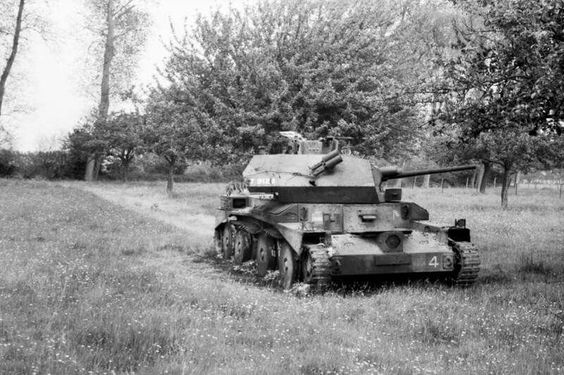Thursday 30 May 1940
 |
| The Bourrasque, deck crowded with men, in its last moments. |
General de Gaulle calls off his attack on Abbeville. The French have recovered about half the ground of the bridgehead, but lost 105 tanks in the process. One must chalk the victory up to the strength of the German artillery and the clever way in which it is handled.
 |
| Another view of the Bourrasque. |
The evacuation is picking up steam. An additional 53,823 men are taken off (24,311 Allied troops embark from Dunkirk harbor and 29,512 men from the beaches). For the first time, some French troops are picked up.
Smaller vessels are used primarily to transport men out to the larger transport ships standing offshore. General Sir Alan Brooke of British 2d Corps leaves today for Dover, where he will meet with General Dill and receive a new command. Bernard Montgomery, commander of the 3rd (Iron) Infantry Division, replaces him.
The Germans are close enough to start scoring artillery hits on the rescue ships. Despite a constant RAF presence, the Luftwaffe is getting through just enough to cause problems.
Conditions within the beachhead are orderly, but crude. Hospital Services for the wounded are sketchy at best. Many badly wounded men (lost arms or legs) are given morphine or heroin and allowed to drift off.
 |
| Men in a trench at Dunkirk, May 1940. |
French destroyer/torpedo ship Bourrasque is damaged by striking a mine off Nieuwpoort, and then sunk by artillery fire off Ostend. It is loaded with BEF troops, and 660 men either drown or swim ashore and are captured. There are about 300 survivors picked up by other ships.
Three large transport ships are sunk off of Dunkirk.
Three Royal Navy destroyers (HMS Anthony, Sabre, and Worcester) are damaged off of Dunkirk.
Numerous smaller vessels are damaged near Dunkirk, including minesweeper HMS Kellet, armed boarding vessel HMS King Orry and steamers St. Julien & Normannia.
U-101 (Kapitänleutnant Fritz Frauenheim) torpedoes and sinks 4,831 ton British freighter Stanhall about 35 miles northwest of Ile d'Ouessant, France. There are 36 survivors, one man perishes.
U-boats U-100 (Kapitänleutnant Joachim Schepke) and U-123 (Kapitänleutnant Karl-Heinz Moehle) are commissioned.
Convoy OA 158GF departs from Southend, Convoy OB 158 departs from Liverpool.
 |
| 30 May 1940: more men are being taken off from the beaches than from the docks. |
RAF Bomber Command attacks Hamburg and Bremen during the night with 18 bombers.
Norway: The British continue the evacuation of Bodø, taking another group of men off to Harstad. Colonel Gubbins remains in the port. The German 2d Mountain Division is still working its way up the lengthy road which the British were able to skip by using the ferry.
General Dietl and his mountain troops remain in the middle of nowhere in northern Norway. The Allies continue to press them, and the German mountain troops are retreating slowly toward the Swedish border at Bjørnfjell, which is only 18 miles away. During the day, Dietl receives another 57 men of the 1st Fallschirmjaeger Regiment. His main hope is the slow, painful advance of the 2nd Gebirgsjäger Division.
Once at the border, Dietl will have to make a decision whether to stand and fight to the end or cross the border and be interned - and cloud the entire campaign. Hitler is not giving him the option to be interned - the Fuhrer is focusing as much on Narvik as on the much more vital campaign in France. From the broadest possible perspective, Dietl's troops have served as a capital decoy to divert attention away from the main front in France - on both sides.
Ethiopia: The Duke of Aosta is in command of Italian forces in Addis Ababa. He is instructed to mobilize his forces.
German/Italian Relations: Mussolini tells Hitler that Italy will declare war on the side of the Axis on 5 June 1940.
US Government: President Roosevelt decides to keep the US fleet in the Pacific rather than bring it to the Mediterranean as has been suggested by US Ambassador to France William Bullitt, Jr. He has Secretary of State Cordell Hull tell Bullitt:
The presence of the fleet in the Pacific at this time is a very practical contribution to the maintenance of peace in the Pacific.In Montevideo, US Minister Edwin C. Wilson notes in a telegram to Hull that the political situation is "deteriorating." He portrays a Uruguayan government that is "drifting," with ordinary people "climbing on the German bandwagon." He cautions that if things continue, an "armed movement is a possibility."
German Homefront: Food rationing is easing due to an influx of supplies from Denmark, Norway, and the Low Countries.
 |
| A destroyed Cruiser Mk IV tank after an engagement on 30 May 1940. |
May 1940
May 1, 1940: British Leave ÅndalsnesMay 2, 1940: British Depart Namsos
May 3, 1940: Many Norwegians Surrendering
May 4, 1940: Bader Returns
May 5, 1940: HMS Seal Survives
May 6, 1940: Allies Focus on Narvik
May 7, 1940: In The Name of God, Go!
May 8, 1940: Exit Chamberlain
May 9, 1940: Enter Churchill
May 10, 1940: Fall Gelb
May 11, 1940: Eben Emael Surrenders
May 12, 1940: Germans at Sedan
May 13, 1940: Rommel at Work
May 14, 1940: German Breakout in France
May 15, 1940: Holland Surrenders
May 16, 1940: Dash to the Channel
May 17, 1940: Germans Take Brussels
May 18, 1940: Germans Take Antwerp
May 19, 1940: Failed French Counterattack
May 20, 1940: Panzers on the Coast
May 21, 1940: Battle of Arras
May 22, 1940: Attacking Channel Ports
May 23, 1940: British Evacuate Boulogne
May 24, 1940: Hitler's Stop Order
May 25, 1940: Belgian Defenses Creaking
May 26, 1940: Operation Dynamo
May 27, 1940: King Leopold Surrenders
May 28, 1940: The Allies Take Narvik
May 29, 1940: Lille Falls
May 30, 1940: Operation Fish
May 31, 1940: Peak Day for Dynamo
2020
No comments:
Post a Comment